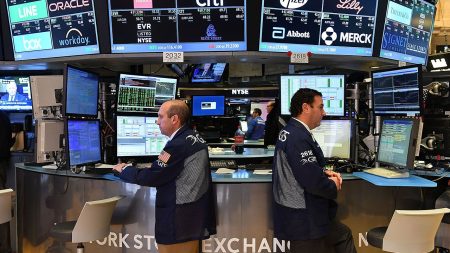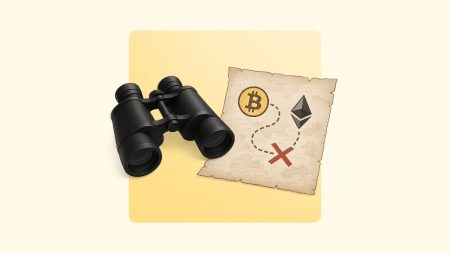Companies often have various people interested in their success, including shareholders and stakeholders. While these two groups often overlap, they are not the same.
The first thing to know is that shareholders are always stakeholders because their success depends on the company’s success. While stakeholders may also succeed due to the company, they may not own stock.
Key takeaways
- Shareholders are individuals or institutions that own shares of stock in a company.
- Stakeholders are people or entities that depend on the success of a company.
- While shareholders are always stakeholders, not all stakeholders are shareholders.
What is a stakeholder?
Stakeholders are individuals or groups with an interest in a company’s or organization’s decisions or success. They can either influence the company’s success or be impacted by its actions.
Stakeholders, such as employees, managers, executives and the board of directors, are internal to the company or organization. Employees are stakeholders because they depend on companies for income and job security. The board of directors is a stakeholder because it makes decisions that directly affect the company’s success.
Stakeholders can also be external to the company. For example, they might include customers, suppliers, lenders, government entities and the local community. Depending on their role, external stakeholders can influence or be impacted by company decisions. However, they generally don’t have a significant influence on company decisions.
What is a shareholder?
In contrast, a shareholder is a person or institution who owns one or more shares of stock in a company. Shareholders can come in many forms, such as individual investors who may purchase stock through a broker and employees with stock options.
There are also institutional investors, such as pension funds, mutual funds and hedge funds. Generally, institutional investors are large groups that invest in companies to earn a return on their investments. Institutions might have other motivations for purchasing stock. For instance, common stock comes with voting rights, so institutions may buy this type of stock to gain a controlling interest in a company. Companies may issue another kind of stock called preferred stock, which earns regular dividends.
Key differences between shareholders and stakeholders
| Shareholders | Stakeholders | |
|---|---|---|
| Company interest | Own stock in a company | Can influence or are affected by the company’s success |
| Priorities | Primarily focused on financial returns and profit | Interested in broader company performance |
| Examples | Retail investors, institutional investors, company executives | Employees, customers, suppliers, local communities, government entities |
| Financial involvement | Invest money to earn a return | May have financial interests, but not always through stock ownership |
| Outlook | Tend to have a short-term focus, reacting to market news and stock price fluctuations | Tend to have a long-term focus, valuing stability and ongoing relationships over immediate financial results |
Shareholders and stakeholders can often have overlapping priorities, but they aren’t the same. Here are some key differences between them.
Company ownership
All shareholders are stakeholders, but not all stakeholders are shareholders. Owning stock in the company makes you a shareholder as well as a stakeholder. But anyone affected by the company could be considered a stakeholder, whether they own the company’s stock or not.
Priorities
Shareholders are focused on financial returns, while stakeholders are interested in broader performance success. Common stockholders have voting rights, and can exercise them at shareholder meetings. However, the shareholder’s motivation to vote is often financial. Most shareholders buy stock in a company mainly to generate a profit.
Stakeholders might be financially interested in a company, but not necessarily because they are shareholders. For example, a company’s employees are stakeholders but may or may not own shares of stock. However, their job security depends on the company’s financial success. Stakeholders usually want a company to succeed, but for reasons that can be more complex than its share price.
Short-term outlook vs. long-term outlook
Shareholders are often more short-term focused than stakeholders. The short-term focus of shareholders is evident when the press reports a negative news story about a company. Negative press often leads to an immediate drop in share price as investors offload shares. However, the news story may not affect the company long term.
Stakeholders tend to be more long-term focused. Employees, suppliers, and vendors often look to maintain their relationship with the company for years. Stability is often a plus for stakeholders, who may be less concerned with day-to-day developments. They may be happy as long as they can maintain their existing social or economic agreements with the company.
Bankruptcy proceedings
Bankruptcy proceedings typically have significant impacts on shareholders and stakeholders. For instance, common stock often loses most or all of its value, leading to the loss of shareholders’ investments. Preferred stock-holders may recover some of their investment, but creditors have priority over them. Common and preferred stock have a high risk of loss in a bankruptcy.
The impact on stakeholders can be more varied, with employees facing layoffs or reductions in benefits. Vendors may not receive all the money they are owed, while creditors often take first precedence in receiving payments. Customers face impacts like a risk of delays and interruptions to services.
Shareholder theory vs. stakeholder theory
Shareholder theory suggests that the sole responsibility of corporations is to maximize profits for shareholders. Stakeholder theory, in contrast, is the idea that stakeholders should have priority and that the relationship between stakeholders and the company is more complex and nuanced.
Shareholders often focus on short-term fluctuations in a company’s stock price. If a company fails to turn a profit, shareholders can sell their stock. They can either repurchase the stock later or buy stock in a different company So they’re able to dissolve their relationship with the company quickly and maybe with little cost.
But things may not be so simple for stakeholders. For instance, a supplier might rely on another business to buy its products. If the company struggles, it may stop placing orders with the supplier. This would likely impact the long-term financial performance of the supplier negatively as well as the buyer, whose product lines might suffer, too.
FAQs
Bottom line
While the key difference between a shareholder and stakeholder is whether they own stock or not, the two groups can differ in many other respects, particularly their attitudes and emotional investment in the company. Stakeholders have broader motivations beyond the financial success of the business that they’re connected with.
Read the full article here












